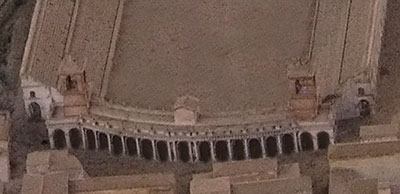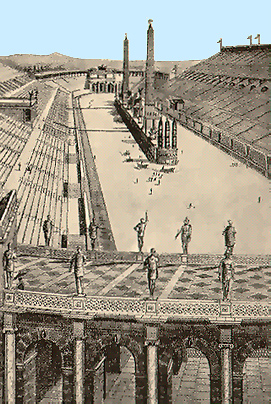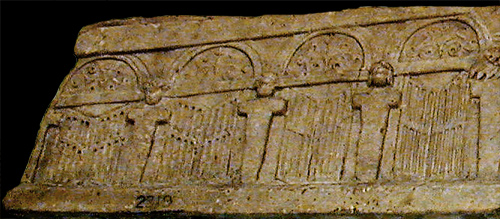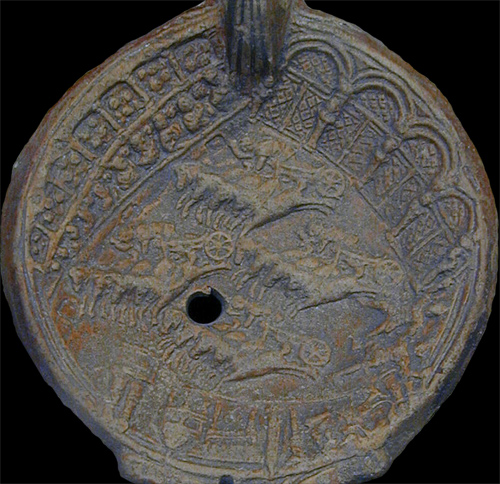

The Latin is carceres. On each side of the end of the track closest to the Tiber stand huge archways used for processions; between these stretch a line of 12 arched openings containing wide stalls. Note that the multistory towers and central arch shown on this model were added after the time of Antoninus Pius. For example, a sestertius issued to commemorate Trajan's major renovations of the circus does not show the towers but rather a tall arch topped with a quadriga:

The reconstruction drawing below shows the view of the track from the starting stalls. Charioteers draw lots for gate assignments; the gates are arranged on a slight curve and have marked lanes to ensure that all teams have the same distance to travel as they thunder toward the right side of the barrier.

In front of each stall is a slatted wooden gate, and the arched opening above the gate is closed by a metal grill. The gates are separated by pilasters topped by herms. Thanks to an ingenious mechanism, the 12 wooden doors all spring open at the same time when the magistrate starts the race by dropping a white cloth (called a mappa). The Roman relief and lamp depicted below show detailed views of the starting gates.

